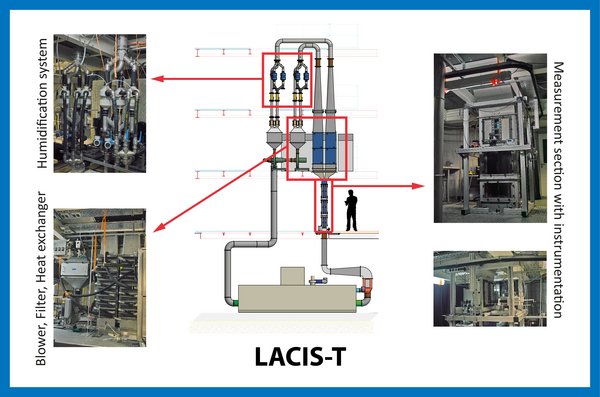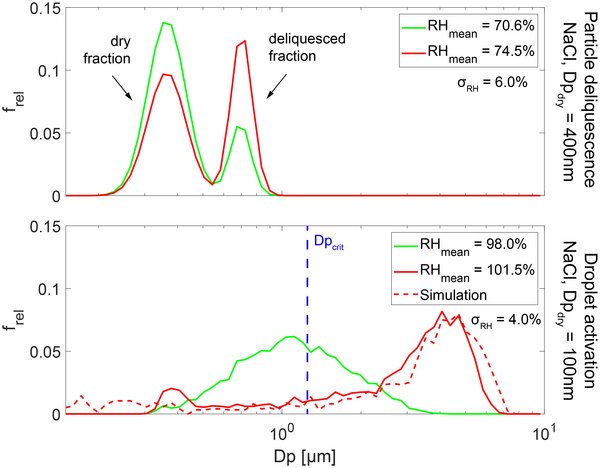
Sketch of LACIS-T in the TROPOS cloud laboratory building: © Schulz und Schulz Architekten GmbH; Ingenieurbüro Mathias Lippold, VDI; TROPOS.

Atmospheric clouds are highly non-stationary, inhomogeneous, and intermittent, and embody an enormous range of spatial and temporal scales. Strong couplings across those scales between turbulent fluid dynamics and microphysical processes are integral to cloud evolution.
Generally, we are aiming at gaining fundamental and quantitative understanding concerning
Examples for that are, the relative influences of turbulent fluctuations in temperature and vapor pressure compared to the variability in aerosol particle properties (i.e., composition, morphology, size, and/or number) on the formation (cloud droplet activation) and glaciation (droplet freezing) of clouds.
The turbulent moist air wind tunnel LACIS-T (Turbulent Leipzig Aerosol Cloud Interaction Simulator) is an ideal facility for pursuing mechanistic understanding concerning these processes and interactions under well-defined and reproducible laboratory conditions. The experimental investigations at LACIS-T are accompanied and complemented by Computational Fluid Dynamics (CFD) modeling using OpenFOAM in order to design and interpret the experiments.

Sketch of LACIS-T in the TROPOS cloud laboratory building: © Schulz und Schulz Architekten GmbH; Ingenieurbüro Mathias Lippold, VDI; TROPOS.
First investigations with size-selected, monodisperse sodium chloride particles show that turbulent humidity fluctuations lead to particle deliquescence / droplet activation although the mean relative humidity is smaller than the corresponding deliquescence humidity (approx. 75.5% for NaCl) /critical supersaturation. The fraction of deliquesced particles / activated cloud droplets depends on the mean relative humidity (RHmean) and the width of the humidity distribution (σRH). Turbulent moisture fluctuations also lead to a broadening of the cloud droplet size distribution Niedermeier et al., 2020.

Results about particle deliquescence and droplet activation under turbulent conditions utilizing size-selected, monodisperse NaCl particles.
The results and knowledge gained and to be gained will be highly interesting on a fundamental process level, and will also help in interpreting the results from in-situ measurements in clouds. The investigations will significantly enhance our understanding concerning the interactions between cloud microphysics and turbulence, and consequently cloud processes in general.